Nuremberg Candlestick – Maker David Zeltner (after 1684)
A member has asked for our advice on this rather fine candlestick, which has a mark (the letters DZ either side of a crown) on the edge of the base. The candlestick is shown in the attached images, and is further described as follows:
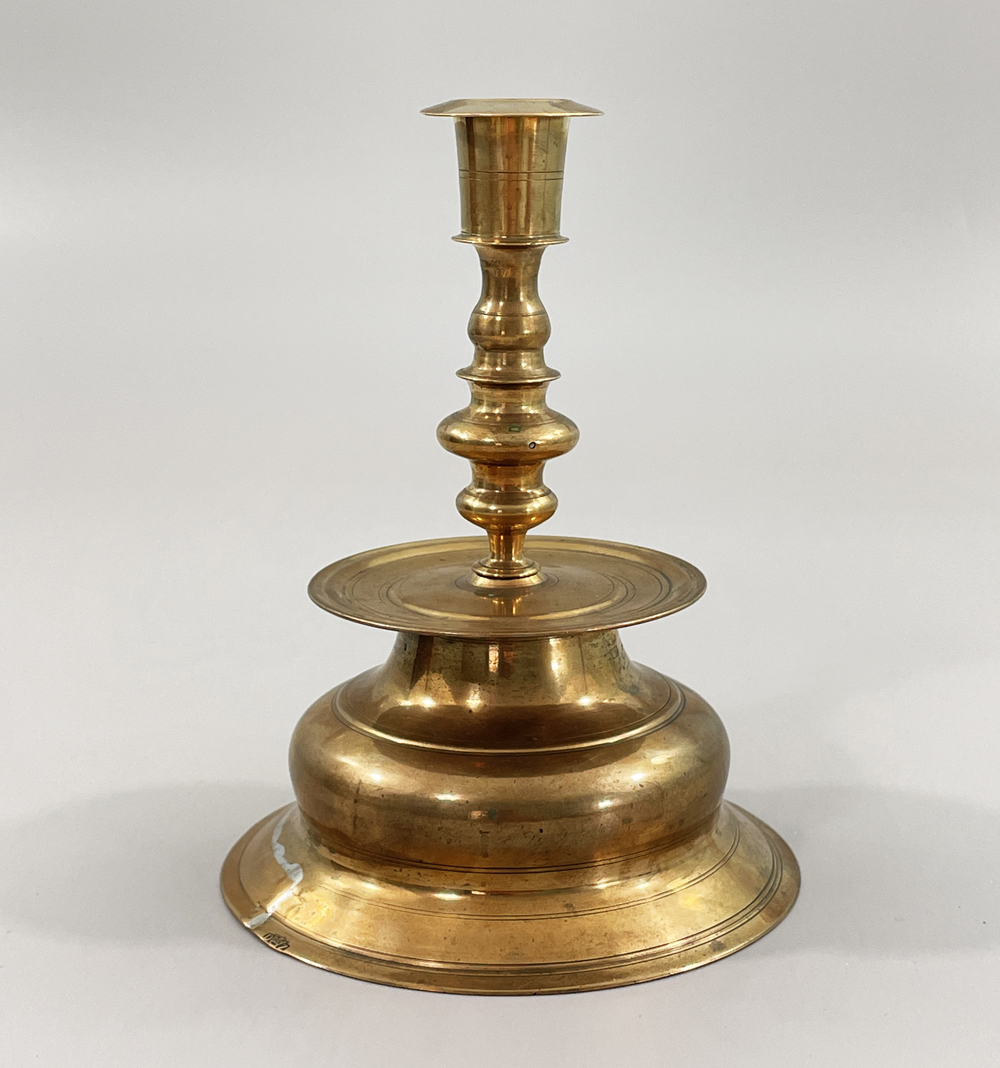
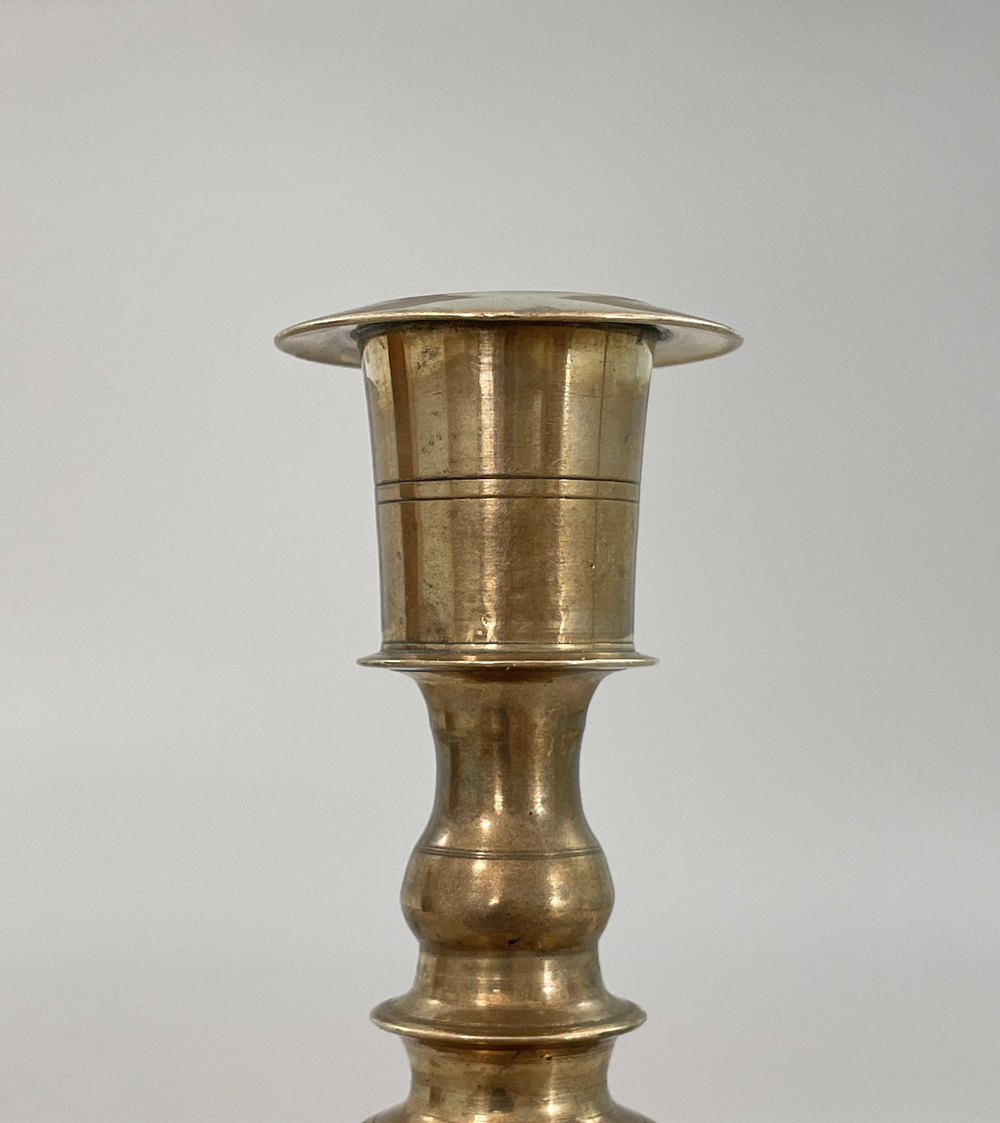
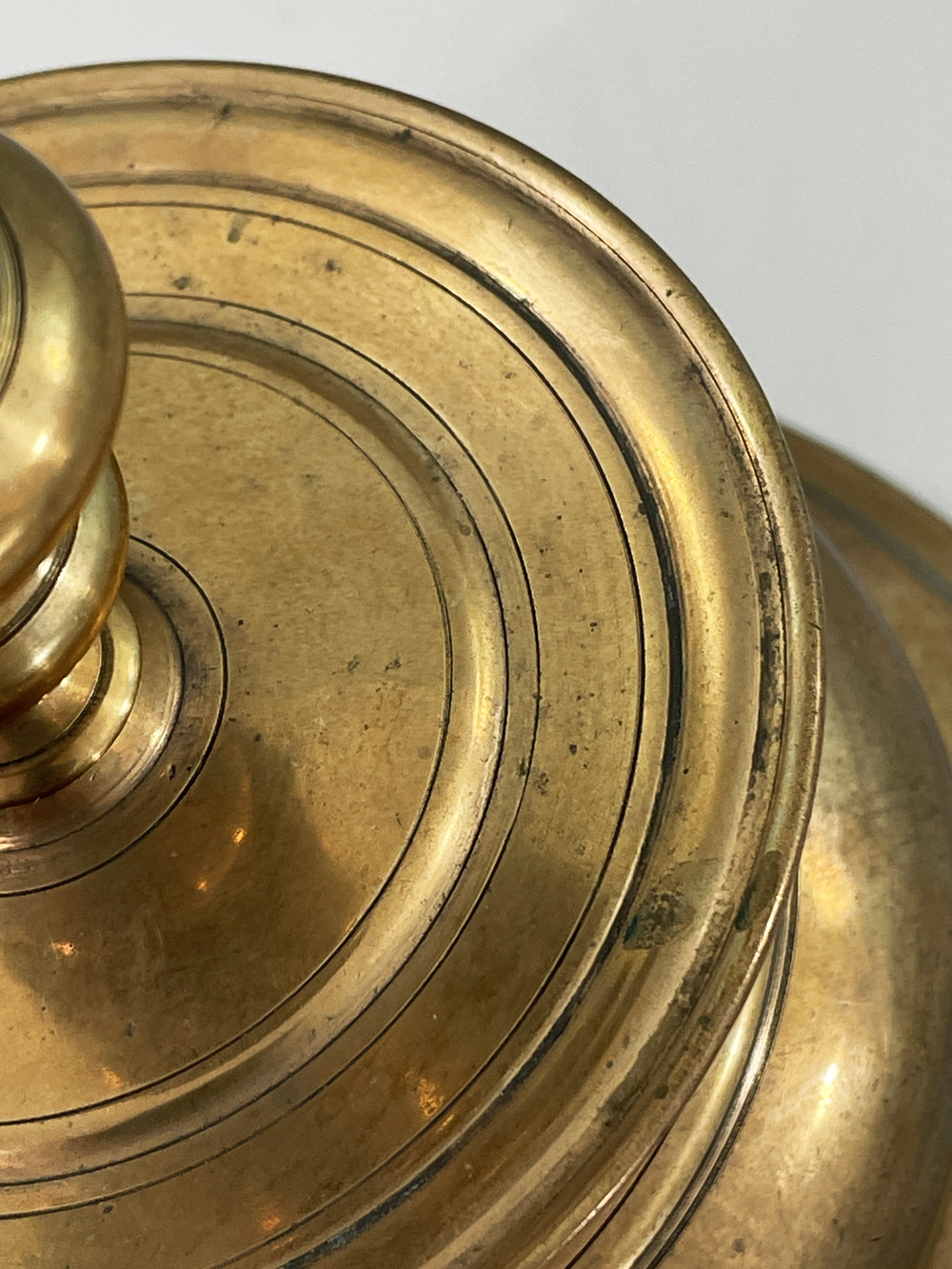
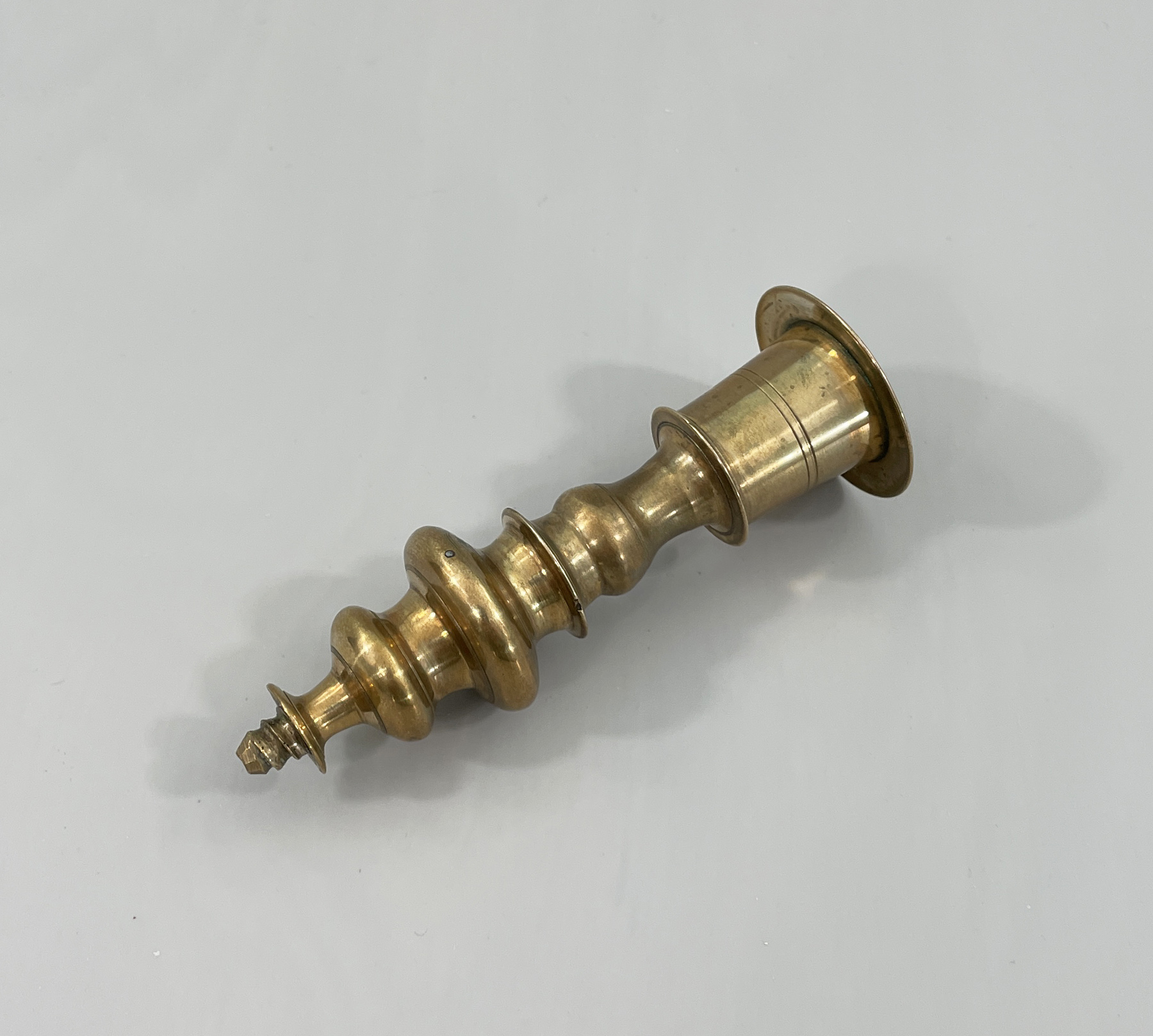
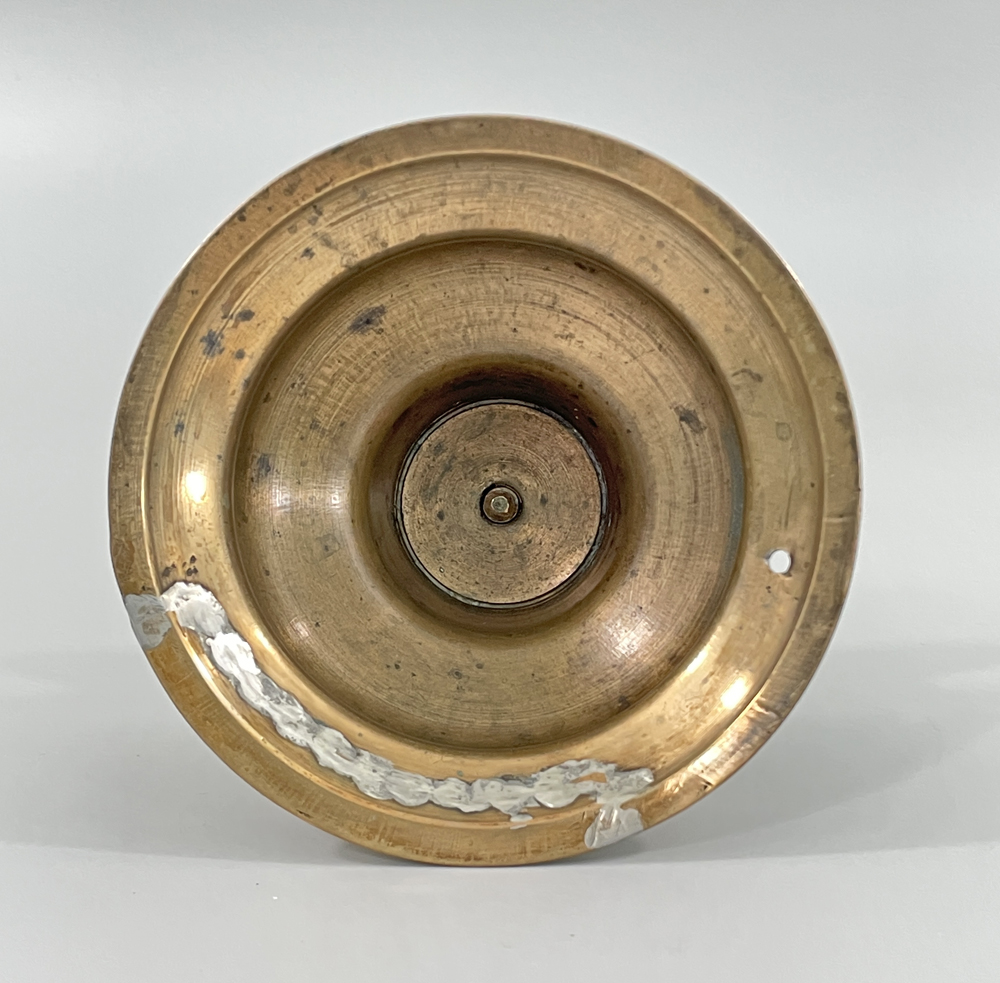
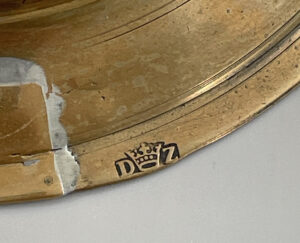
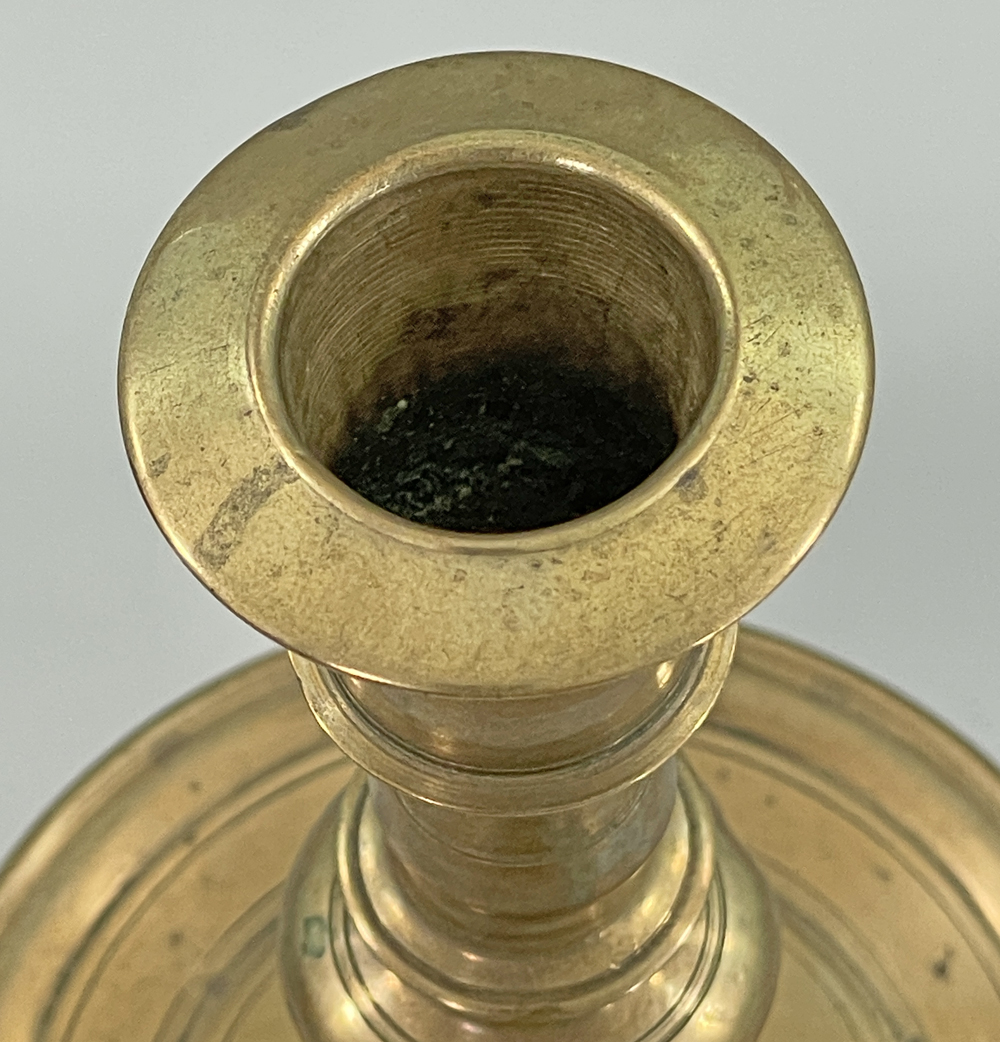
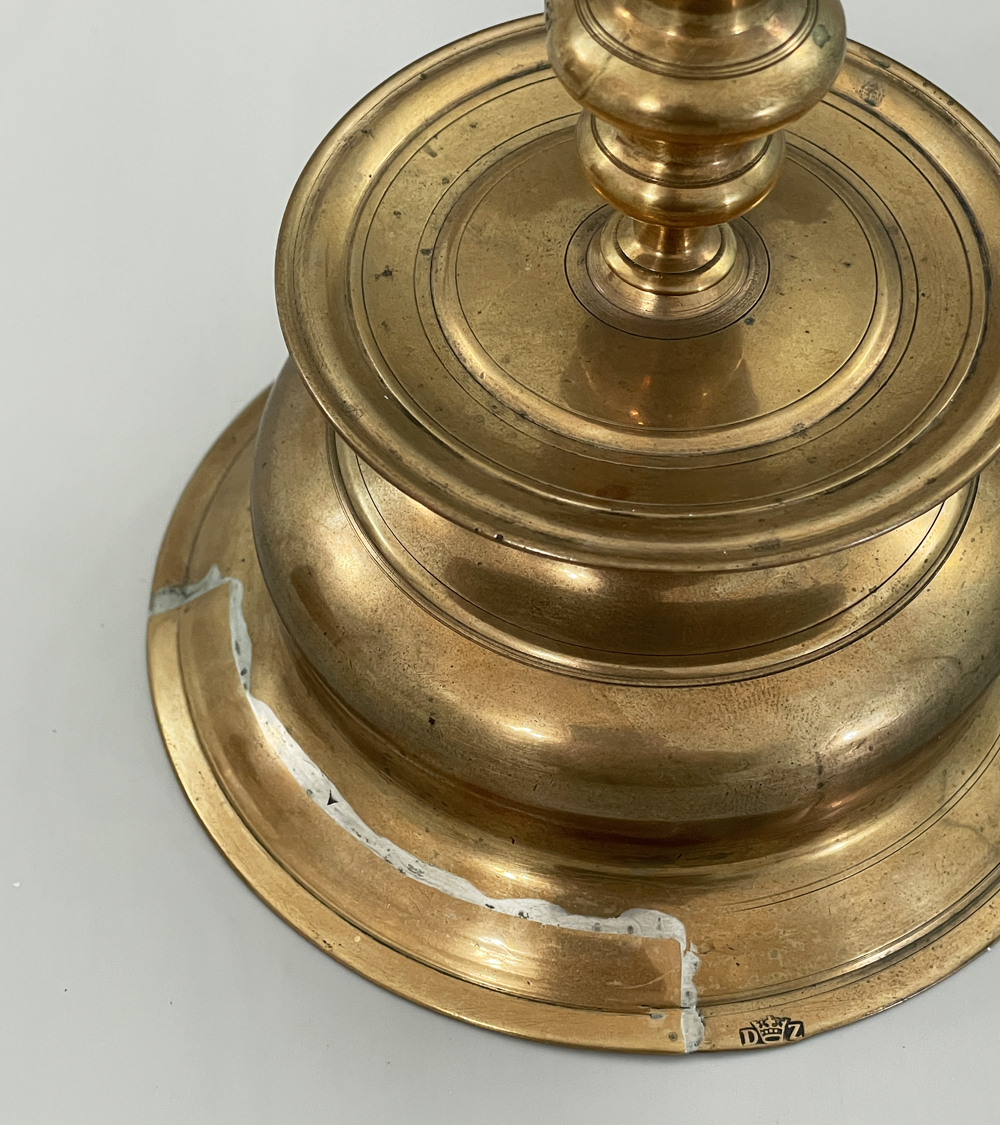
‘This is a light and delicate candlestick, 6.5 inches tall and weighing just 10 ounces. In places where the edge is accessible the thickness of the metal ranges from 0.040 to 0.060 inch. It has a repair to the base and a small hole, and it has a mark. From its characteristics, is it possible to say where and when this candlestick was made?’
Members’ Comments:
I think this is a german candlestick, made in Nuremberg 16th/17th century. Both the shape and the type of mark correspond to this origin.
Bibliography : Glänzend wie Gold, Otto A. Baumgärtel, pages 56/57
This is a very fine candlestick. Almost certainly of Nuremberg manufacture, dating to the 17th century.
What a perfect maker’s mark but unfortunately I couldn’t find it in Lockner’s 1981 book – the bible on the subject. Of course such a work, though deeply impressive, can never be considered complete as it is based on a partial historical record so there will be many marks not recorded. However Lockner does have an entry on David Zeltner and describes his later mark as having a crown with his name. Given that there is no illustration of the mark, Lockner’s information will be derived from written archive source material so I think it’s quite possible that name might mean initials. If the stick is by Zeltner and if Lockner’s dates are correct then this would place its manufacture in the late 17th century.
Wonderful that the stick is in such great condition with the exception of the loss/repair on the base. It’s not a great repair but at least that piece has been retained. It can be challenging to braze such fine thin metal so the lead solder is a reasonable solution – unfortunate that the mark is right next to the ugly repair!
Brief observations from the excellent pictures:
(1) A steel core pin is visible on the large central knop – used to hold in place a core to reduce the amount of brass required for casting, and the weight of the finished stick.
(2) The still functioning hand-cut screw thread of the joint is a delight – so often sticks of this type have been soldered up due to wear on the joint.
(3) Extensive and careful fine lathe turning is evident on the underside and inside the socket.
(4) There is what seems to be a neatly punched hole in the edge of the base but no close up picture of that area is provided. Often such holes have been drilled by some misguided shedwork artiste in order to “lamp” the stick but in this case I see no further evidence of this – thank goodness! So I think it might be where a foundry patch has fallen out – a small repair to correct a casting flaw which would have been invisible when new but over the centuries can become more apparent and even sometimes come loose. This might have happened at the same time the base was fractured presumably as a result of carelessly dropping the stick on a hard surface.
(5) The level of detail retained with the ring turnings and the sharpness of the flanges on the nozzle and the general condition is very good indeed.
In a word: super!
Christopher Bangs illustrates a pair of similar sticks in his Lear Collection book and I have attached a photo of the plate – number 90. The text is below and I think it’s a very good description of sticks of this type and certainly applies to this one.
“ 90. GERMANY, Nuremberg, 17th century. Copper alloy. Height (each): 240 mm. (976 in.) Diameter of base (each): 180 mm. (748 in.). Maker’s mark on upper surface of the base rims: shoe, flanked by initials “MS”, Melchior & Schuster, before 1692. (Lockner 804).
The multi-knopped shafts on this impressive pair of candlesticks exemplify the alternative form to the previous example. While a variety of permutations of dough-nut, discoid and pear-shaped knops can be found, the symmetry of this pair is particularly successful, unlike some examples where weak shafts are overpowered by bold bases.
The high standard of workmanship that is the hallmark of the Nuremberg brass industry is evident here. The bases are lathe-finished to the customary thin gauge, a testimony to the quality of the metal. The shafts follow the following upward configuration: the seat, a short shaft with central moulding, the lower smaller doughnut knop with double lines incised on the shoulders, a short incurve to the larger doughnut knop with double lines incised on the top and bottom slopes, an incurve to the bold discoid knop and a pear-shaped knop to a flaring shaft from which flows the socket with bottom disc moulding and generous top rim. The core-pins can be seen clearly, two on the larger doughnut knop and one on the smaller.
Because this pair is relatively crisp, it is easy to compare the turning work done to each; as is to be expected, they actually differ in minute details from socket to base rim. With such an intricate design, it is unlikely that two truly identically finished pieces would ever leave a workman’s bench.”
Refs:
Die Merkzeichen der Nürnberger Rotschmiede – Hermann P. Lockner
The Lear Collection: A Study of Copper Alloy Socket Candlesticks A.D.200-A.D.1700 – Christopher Bangs
This candlestick is German & bears the mark of the Nuremberg maker David Zeltner (after 1684). Ref. Hermann Löckner, Die Merkzeichen der Nürnberger Rotschmiede, no 829.
The bell-base is typical of Nuremberg candlesticks, as is the very fine lathe-turning. It was done to save metal, but resulted in a base that was fragile & prone to damage, as the present example sadly demonstrates. The purpose of the hole in the base is obscure. It may be an abortive attempt at electrification: as the stem is solid rather than hollow, it would be virtually impossible to drill it to accommodate an electrical cable. Perhaps this wasn’t appreciated until after the hole in the base had been drilled.
Nuremberg, usually dated to third quarter of 17th c. Have two v similar; one brass, one pewter. Can’t help with the mark, I’m afraid.
Both the style and the very lightweight construction of the candlestick clearly indicate that it was made in Nuremberg. It should date around 1700.
It bears the mark of David Zeltner who had his workshop in Nuremberg from 1684 onwards.
Nuremberg, 17th century. See Bangs, The Lear Collection, No.90.
In my opinion this candlestick dates from the mid 16th century and is definitely Nuremberg. They were turned very thin and consequently are often damaged. I had one once and it carried a mark “ss” to the rim of the base. A person at Sothebys identified the mark as Stephan Schirmer of Nuremberg. It is worth mentioning that similar candlesticks were made in Scandinavia I think. The ‘default’ Nuremberg metal seems to be a coppery bronze that was also used for the many alms dishes.
Thank you to the owner of the candlestick for submitting it to Q&Ts, and to all those who took the time to share their detailed knowledge, pertinent observations and useful references with their fellow AMS members!
